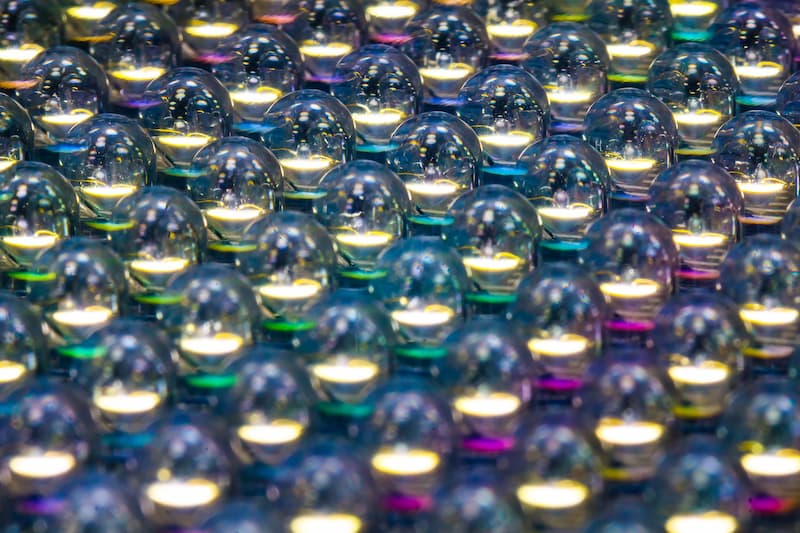LED technology facilitates the design of unique and custom luminaires. They provide many benefits, including reduced energy consumption, increased lifetimes, and excellent design flexibility. Design flexibility becomes even more significant when we consider custom LED optics – so what are LED optics?

First, let's explore what an LED is. In simple terms, a light-emitting diode (LED) emits light when an electrical current passes through it. Current flows across two semiconductor materials and causes light to be emitted at the junction of the two. Since light is generated within solid semiconductor materials, LEDs are often described as solid-state devices.
Solid-state lighting, which also encompasses organic LEDs (OLEDs), has replaced traditional light sources such as incandescent, halogen and fluorescent lamps. Unlike traditional light sources, LEDs are not omnidirectional. Mounted on a substrate, the light from the chip or module is necessarily directed outwards within a hemispherical cone. This calls for a different approach to control. If we add the physical issue of the LED being such a tiny light source, we can see why optical control technology has developed.

The primary optic increases light output by reducing reflection at the chip/optic boundary and also protects the electronic components. A primary optic is integrated into the LED package and can adjust the LED's spatial distribution. Spatial distribution refers to the shape or spread of light emitted from the device. The beam angle is usually adjusted by focusing with a secondary optic.
Secondary optics take control of the light output – they can collimate the light rays and put all the light exactly where you need it. With just the primary optic, the LED may not provide enough intensity for the desired target. Especially when considering street lighting, architectural lighting, spotlights, and interior lighting.
Secondary optics can also be used to improve colour uniformity and light distribution within the target area. The application and your lighting requirements will determine the appropriate secondary optic choice. Two common types of secondary optics used in LED lighting are TIR (Total Internal Reflection) optics and metallised reflectors.
These are often injection moulded plastic parts coated in pure aluminium. They can also be pressed or spun from aluminium sheets. Mainly used for circular beam shapes, they can be used where a distinct beam edge is required.
Metallised reflectors are a wise choice for wider beam angles, where they provide a high-efficiency solution. Narrow beam angles are possible, but they will generally achieve a lower peak intensity than equivalent TIR optics. Metallised reflectors with a diffuse or patterned surface can be used in combination with TIR optics to lower luminance and minimise glare.
These are often made from injection moulded plastic but can also be made from clear silicone. They work by a combination of refraction and TIR (Total Internal Reflection) and can be used to create either circular or asymmetrical beam shapes.
In a TIR optic, light from the LED can be manipulated through multiple reflections and refractions compared to just one surface for metallised reflectors. This means that light can be controlled more precisely. With the light going just where you need it, a luminaire can be designed that requires less light and power to do the same job.
Beam patterns are a vital element when designing LED optics. The beam pattern is the result of the angle and spread of the light; the optic will manipulate the light from the diode to create the desired beam pattern. This is particularly important for lights used in vehicles.
As LED solutions manufacturers, Forge uses specific materials to create custom optics that optimise transmission and enable the desired beam pattern to be achieved. However, different materials will affect light transmission uniquely, so knowing which one to choose is vital for creating high-quality custom luminaires. Examples of materials we choose are:
Each material will suit a different application and environment. PMMA has an excellent transmission whilst being durable but operates better at lower temperatures which will be a consideration in their application. In addition, some material features can provide surprising benefits; for example, silicone is a flexible material that enables unique and usually and otherwise un-moldable shapes to be formed.
Forge designs and manufactures world-class LED solutions and custom optics to ensure your ideas are brought to light. Our optical engineers use the latest technology to design completely custom LED solutions that meet all your optical requirements, such as flux, illuminance and intensity.


